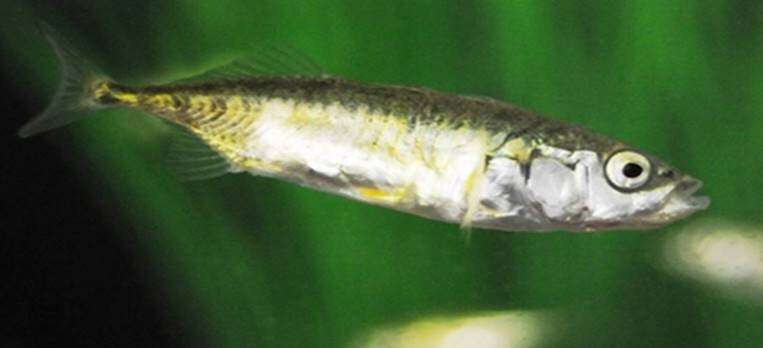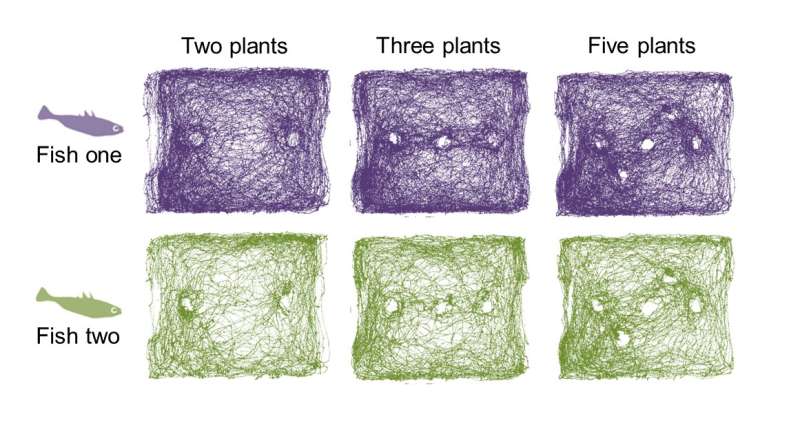A three-spined stickleback (Gasterosteus aculeatus). Credit: Dr Andrew King, Swansea University
The way a fish swims reveals a lot about its personality, say scientists
Personality has been described in all sorts of animal species, from ants to apes. Some individuals are shy and sedentary, while others are bold and active. Now a new study published in Ecology and Evolution has revealed that the way a fish swims tells us a lot about its personality.
This new research suggests experts can reliably measure animal personality simply from the way individual animals move, a type of micropersonality trait, and that the method could be used to help scientists understand about personality differences in wild animals.
A team of biologists and mathematicians from Swansea University and the University of Essex filmed the movements of 15 three-spined stickleback fish swimming in a tank which contained two, three, or five plastic plants in fixed positions.
Using the high-resolution tracking data from video recordings, the team took measurements of how much and how often the fish turned, and how much they stopped and started moving.
The data revealed that each fish's movements were very different, and that these differences were highly repeatable—so much so that the researchers could identify a fish just from its movement data.
Three-spined stickleback (Gasterosteus aculeatus) swimming in a tank Credit: Dr Ines Fürtbauer, Swansea University
Dr. Ines Fürtbauer, a co-author of the study from Swansea University, said: "These micropersonalities in fish are like signatures—different and unique to an individual. We found the fish's signatures were the same when we made simple changes to the fish tanks, such as adding additional plants. However, it is possible these signatures change gradually over an animal's lifetime, or abruptly if an animal encounters something new or unexpected in its environment. Tracking animals' motion over longer periods and in the wild will give us this sort of insight and help us better understand not only personality but also how flexible an animal's behavior is."
The movements of two example fish featured in the study. Credit: Joseph Bailey
The authors of the study say that further work with other species and contexts is needed to see how general the phenomenon is, and if the same patterns are seen with land animals or flying species.
Dr. Andrew King, lead author from Swansea University, said: "Our work suggests that simple movement parameters can be viewed as micropersonality traits that give rise to extensive consistent individual differences in behaviors. This is significant because it suggests we might be able to quantify personality differences in wild animals as long as we can get fine-scale information on how they are moving; and these types of data are becoming more common with advances in animal tracking technologies."
More information: Joseph D. Bailey et al, "Micropersonality" traits and their implications for behavioral and movement ecology research, Ecology and Evolution (2021). DOI: 10.1002/ece3.7275
Journal information: Ecology and Evolution
Provided by Swansea University

























